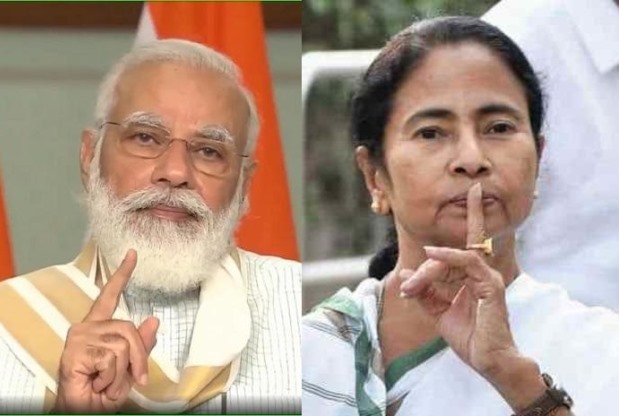Of the four states where there will soon be assembly elections in April-May, West Bengal’s will be the most keenly watched. It is the state where the Bharatiya Janata Party (BJP) is the biggest challenger to the incumbent All-India Trinamool Congress (AITC) government, which, led by chief minister Mamata Banerjee, is completing 10 years in power.
For several years, the eastern state has been a hard nut to crack for the BJP but in the last parliamentary polls, the party managed to win 18 member of parliament seats from Bengal, which was a feat considering that the party has traditionally managed to get no more than two MPs elected from the state. In the West Bengal assembly, the BJP currently has just 27 of the 294 seats (the AITC and its allies have 211).
The BJP’s formulaic approach to winning in the states – the party enjoys power in 18 of India’s 28 states – thus far has been a combination of caste and religion based politics. In the Hindi belt states as well as in the western states this has worked well. But in Bengal, caste politics and religious issues have mattered less in the past. That, however, could change. The Muslim population in Bengal has grown steadily and is estimated now at nearly 30% compared to the all-India proportion of a little more than 13%.
This has two implications. A larger proportion of Muslim voters has stood in the way of the Hindu nationalist-leaning BJP becoming popular in the state. But it has also created a sort of backlash among Hindu voters many of whom perceive Ms Banerjee’s government as being one that appeases the minority community. The BJP wants to turn that sort of backlash to an electoral advantage.
The BJP is also following a strategy that challenges Ms Banerjee’s government with charges of corruption, particularly against her nephew Abhisek Banerjee, who is an MP and a powerful member of her party. The party has also managed to chip away at the AITC by getting some of its prominent leaders such as former railway minister Dinesh Trivedi, former state ministers Subhendu Adhikary and Rajib Banerjee to defect to the BJP. Although these leaders have limited mass following in the state, their exits have triggered some dissension within Ms Banerjee’s party.
ALSO READ: It’s Bangla Trinamool Vs Outsider BJP
There are other factors that might help the BJP. A large part of the urban population comprising middle-class could be a bit restive about Ms Banerjee’s government, which despite promises has not really been effective in ensuring the state’s economic progress at a more rapid pace. The continuing impact of the pandemic has not helped either.
But yet, the AITC led by the feisty Ms Banerjee has many strong advantages in the state. For instance, the BJP really doesn’t have a credible face to project as its chief ministerial candidate for the state. Also, the backlash against Muslims may have grown but the fact remains that at in 100 of the 294 constituencies, Muslim voters will be the ones who will decide who wins. And the BJP is unlikely to get their favour.
The AITC has also employed the services of a poll strategist with a good track record – Prashant Kishor, who has worked with several Indian parties and leaders, including his efforts in Gujarat where he is believed to have played a key role in ensuring that Narendra Modi got a third term there as chief minister in 2011. The other niggling factor that might affect the BJP is the first ever formal seat-sharing arrangement in the state between the Congress and the Left parties. Both are not significant players anymore (both have just 46 seats between them) but an alliance could dent both, the AITC as well as the BJP’s fortunes in the elections.
The other states that will go to the polls are Tamil Nadu, Assam, Kerala, and Puducherry. In Tamil Nadu it will be a repeat of the traditional battle between two regional parties, DMK and AIADMK. The BJP, which is likely to have an alliance with AIADMK (in power now), hopes to piggyback on that party if it manages to be re-elected. But early analyses show that DMK may have an edge this time. The Congress and Left parties in the state are allied with the DMK.
ALSO READ: ‘Sreedharan Entry Into Politics A Boon For Kerala’
In Kerala, the pattern has traditionally been one where every five years the fortunes swing between the Left and the Congress. In other words, the opposition gets elected to power. By that logic, the Congress-led alliance may come back to power, dislodging the Left alliance which forms the incumbent government. The Congress is hoping that the fact that Rahul Gandhi represents Wayanad (he was elected MP from that constituency in Kerala) will give it more of an edge.
Meanwhile, the BJP looks confident in being able to retain power in Assam but the Congress party there is focussing its strategy on opposing the National Registrar of Citizens and the Citizenship Amendment Act, two thorny issues that have divisive effects in the state. In Puducherry, a union territory, the Congress government has collapsed recently and although this has created uncertainties, it could well work to the advantage of a BJP-backed alliance if that can be formed.
But it is West Bengal that will steal the show during the state elections. The battle for Bengal could be one that is fought tooth and nail by both, Ms Banerjee who wants to come back for a third term; and the BJP, which wants to wrest control of a state that has always posed formidable challenges to it.
